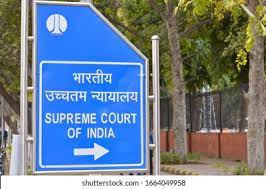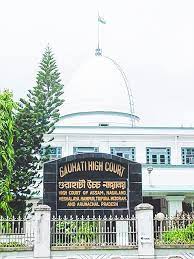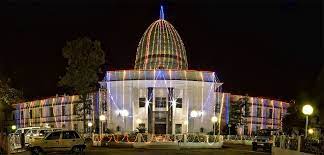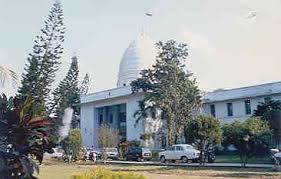Confirming the Appellant- Abhishek Sharma’s sentence of life imprisonment under Section 302 (Para 1)
The Trial Court found all four dying declarations to be consistent, voluntarily made, and in a fit mental condition. Further, concerning the testimonies of PW6, namely Yasin Nagpal, it is established that the deceased was last seen in the convict-appellant’s company when they left the office at around 12:30 AM. The convict appellant’s statement under Section 313 of the Code of Criminal Procedure,1973 stated that he left the office at 12:00 AM and the deceased was still in office. (Para 4.5)
Before proceeding to the merits of this matter, it would be appropriate to appreciate the various principles of law laid down by this court in regard to cases involving multiple dying declarations. (Para 8)
Having considered various pronouncements of this court, the following principles emerge, for a Court to consider when dealing with a case involving multiple dying declarations: (Para 9)
The primary requirement for all dying declarations is that they should be voluntary and reliable and that such statements should be in a fit state of mind; (Para 9.1)
All dying declarations should be consistent. In other words, inconsistencies between such statements should be ‘material’ for its credibility to be shaken; (Para 9.2)
When inconsistencies are found between various dying declarations, other evidence available on record may be considered for the purposes of corroboration of the contents of dying declarations. (Para 9.3)
The statement treated as a dying declaration must be interpreted in light of surrounding facts and circumstances. (Para 9.4)
Each declaration must be scrutinized on its own merits. The court has to examine upon which of the statements reliance can be placed in order for the case to proceed further. (Para 9.5)
When there are inconsistencies, the statement that has been recorded by a Magistrate or like higher officer can be relied on, subject to the indispensable qualities of truthfulness and being free of suspicion. (Para 9.6)
In the presence of inconsistencies, the medical fitness of the person making such declaration, at the relevant time, assumes importance along with other factors such as the possibility of tutoring by relatives, etc. (Para 9.7)
It is true that a dying declaration is not to be discarded on account of brevity, but it is equally true that it must contain the proximate cause of the deceased’s condition and the reason therefor. Here, it states the presence of burn injuries and says that the same was caused by Abhishek, which, arguably, is insufficient. There is no particular identification of the convict appellant, nor is there a mention of the means through which the injuries were inflicted (petrol). (Para 17)
Another question that may be asked is that when DD-I was reported, and a doctor took DD-II, why was it only after the recording of DD-III that an FIR was lodged? We must also consider that, as per DD-II, the burns received by the deceased were on the back, arm, shoulder, and hair, resulting in superficial and deep burns amounting to 30%. In such a situation, can it be said that there was a reasonable apprehension of death, making the statements admissible as dying declarations? (Para 29)
The convict-appellant was not seen at the spot of the crime, nor has the last seen theory been invoked by the prosecution to establish that the deceased and he were together at the time and place of the incident. There is no evidence on record to show what transpired in the investigation of the police from the time of DD-I when, allegedly, the police came to know of the convict-appellant having committed this crime against the deceased and when he was finally arrested at 8 PM. (Para 30)
From the aforesaid discussion, it is clear that DD-I and DDIV must entirely be ruled out on the grounds of a degree of hearsay and that of an interested witness with no corroboration. Regarding DD-II, the suspicion of interpolation and subsequent insertion of the first name of the convict-appellant has not been sufficiently dispelled, for no satisfactory explanation stands accorded for the prominent gap. Regarding DD-III, it is found that the mental state in which it is made cannot be ascertained as there is no discussion on the treatment given to the deceased. In the absence of such clarification, such a statement cannot be relied on without corroboration. (Para 31)
It is undisputed that the deceased was in a position to speak up until six days prior to her death when she was put on life support. Yet the non-recording of the deceased’s statement in the presence of the Magistrate or actual ascertainment of her fitness to make statements by doctors remains unexplained. (Para 33)
Additionally, we may note that apart from the alleged dying declarations of the deceased, there is no evidence on record to point to the guilt of the convict-appellant. It is an established principle that a dying declaration, if it is free of tutoring, prompting, etc. can form the sole basis of conviction. However, having perused the record minutely, we do not find even a scintilla of evidence by which we may uphold the judgments of the courts below. For instance, nothing on record indicates- the ownership of a vehicle by the convict-appellant; any disagreement or animosity between the convict-appellant and the deceased, that is of such an extreme nature as to set her on fire; any connection between the convict-appellant and the inflammable substance used to kill the victim such as the record of purchase or statement of any person to show such substance to be in possession of the convict-appellant, etc. These factors and the fact that the crime in question occurred at an open public access place cast doubt on the prosecution case. (Para 34)
Considering the aforementioned factors, placing the gauntlet of guilt upon the convict-appellant based on dying declarations when no other material particulars, apart from his name, could be elicited therefrom would be unjustified. (Para 35)
SUPREME COURT OF INDIA
2023 STPL(Web) 355 SC
[2023 INSC 924]
Abhishek Sharma Vs. State (Govt. Of Nct Of Delhi)
Criminal appeal No. 1473 of 2011-Decided on 18-10-2023.
https://stpllaw.in/wp-content/uploads/2023/10/2023-STPLWeb-355-SC.pdf







